Nanotechnology
[7] The associated research and applications range from extensions of conventional device physics to molecular self-assembly,[8] from developing new materials with dimensions on the nanoscale to direct control of matter on the atomic scale.However, nanotechnology raises issues, including concerns about the toxicity and environmental impact of nanomaterials,[9] and their potential effects on global economics, as well as various doomsday scenarios.The concepts that seeded nanotechnology were first discussed in 1959 by physicist Richard Feynman in his talk There's Plenty of Room at the Bottom, in which he described the possibility of synthesis via direct manipulation of atoms.The emergence of nanotechnology as a field in the 1980s occurred through the convergence of Drexler's theoretical and public work, which developed and popularized a conceptual framework, and high-visibility experimental advances that drew additional attention to the prospects.The microscope's developers Gerd Binnig and Heinrich Rohrer at IBM Zurich Research Laboratory received a Nobel Prize in Physics in 1986.Second, fullerenes (buckyballs) were discovered in 1985 by Harry Kroto, Richard Smalley, and Robert Curl, who together won the 1996 Nobel Prize in Chemistry.[15] Challenges were raised regarding the feasibility of applications envisioned by advocates of molecular nanotechnology, which culminated in a public debate between Drexler and Smalley in 2001 and 2003.Nanotechnology roadmaps centered on atomically precise manipulation of matter and discussed existing and projected capabilities, goals, and applications.In its original sense, nanotechnology refers to the projected ability to construct items from the bottom up making complete, high-performance products.The concept of molecular recognition is important: molecules can be designed so that a specific configuration or arrangement is favored due to non-covalent intermolecular forces.Such bottom-up approaches should be capable of producing devices in parallel and be much cheaper than top-down methods, but could potentially be overwhelmed as the size and complexity of the desired assembly increases.When Drexler independently coined and popularized the term "nanotechnology", he envisioned manufacturing technology based on molecular machine systems.[27] The physics and engineering performance of exemplar designs were analyzed in Drexler's book Nanosystems: Molecular Machinery, Manufacturing, and Computation.Samples made by MBE were key to the discovery of the fractional quantum Hall effect for which the 1998 Nobel Prize in Physics was awarded.Therapeutic products based on responsive nanomaterials, such as the highly deformable, stress-sensitive Transfersome vesicles, are approved for human use in some countries.[56] As of August 21, 2008, the Project on Emerging Nanotechnologies estimated that over 800 manufacturer-identified nanotech products were publicly available, with new ones hitting the market at a pace of 3–4 per week.[18] Most applications are "first generation" passive nanomaterials that includes titanium dioxide in sunscreen, cosmetics, surface coatings,[57] and some food products; Carbon allotropes used to produce gecko tape; silver in food packaging, clothing, disinfectants, and household appliances; zinc oxide in sunscreens and cosmetics, surface coatings, paints and outdoor furniture varnishes; and cerium oxide as a fuel catalyst.[17] In the electric car industry, single wall carbon nanotubes (SWCNTs) address key lithium-ion battery challenges, including energy density, charge rate, service life, and cost.Typically, these carriers offer advantages, such as enhanced bioavailability, controlled release, targeted delivery, and protection of the encapsulated substances.Researchers have discovered that bacteriostatic silver nanoparticles used in socks to reduce foot odor are released in the wash.[74] These particles are then flushed into the wastewater stream and may destroy bacteria that are critical components of natural ecosystems, farms, and waste treatment processes.[76] Experts, including director of the Woodrow Wilson Center's Project on Emerging Nanotechnologies David Rejeski, testified[77] that commercialization depends on adequate oversight, risk research strategy, and public engagement.Anthony Seaton of the Institute of Occupational Medicine in Edinburgh, Scotland, who contributed to the article on carbon nanotubes said "We know that some of them probably have the potential to cause mesothelioma.[93] Some academics called for stricter application of the precautionary principle, slowing marketing approval, enhanced labelling and additional safety data.[94] A Royal Society report identified a risk of nanoparticles or nanotubes being released during disposal, destruction and recycling, and recommended that "manufacturers of products that fall under extended producer responsibility regimes such as end-of-life regulations publish procedures outlining how these materials will be managed to minimize possible human and environmental exposure".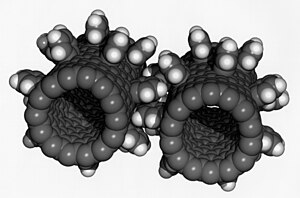

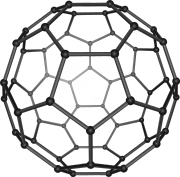

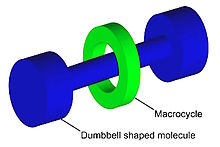

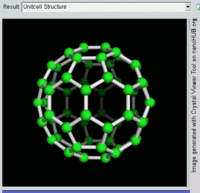


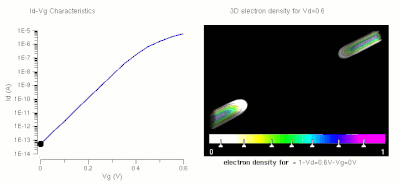
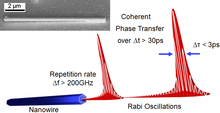
Nanotechnology (journal)Nanotech (disambiguation)HistoryOrganizationsPopular cultureOutlineImpactapplicationsNanomedicineNanotoxicologyGreen nanotechnologyHazardsRegulationNanomaterialsFullerenesCarbon nanotubesNanoparticlesMolecular self-assemblySelf-assembled monolayerSupramolecular assemblyDNA nanotechnologyNanoelectronicsMolecular scale electronicsMolecular logic gateNanolithographyMoore's lawSemiconductor device fabricationSemiconductor scale examplesNanometrologyAtomic force microscopyScanning tunneling microscopeElectron microscopeSuper-resolution microscopyNanotribologyMolecular nanotechnologyMolecular assemblerNanoroboticsMechanosynthesisMolecular engineeringnanometerssurface areaquantum mechanicalsurface scienceorganic chemistrymolecular biologysemiconductor physicsenergy storageengineeringmicrofabricationdevice physicsnew materialsdirect control of matter on the atomic scalebiomaterialstoxicitydoomsday scenariosregulation of nanotechnologyHistory of nanotechnologyRichard FeynmanThere's Plenty of Room at the BottomNorio TaniguchiK. Eric DrexlerEngines of Creation: The Coming Era of NanotechnologyThe Foresight InstituteGerd BinnigHeinrich RohrerIBM Zurich Research LaboratoryNobel Prize in Physicsatomic force microscopeBuckminsterfullerenebuckyballcarbon structuresHarry KrotoRichard SmalleyRobert CurlNobel Prize in ChemistrygrapheneSumio IijimaKavli PrizeRoyal SocietySilver Nanosilver nanoparticlesantibacterial agentnanoparticlecarbon fibersilicafund researchNational Nanotechnology InitiativeFramework Programmes for Research and Technological Developmentnanometerbond lengthsmoleculecellularMycoplasmakinetic diametermacroscopicmicrotechnologyassemble themselvesmolecular recognitionnanomechanicsnanophotonicsnanoionicsreconstructionscanning tunneling microscopystatistical mechanicalquantumsynthetic chemistrypharmaceuticalspolymerssupramolecular assembliessupramolecular chemistrynon-covalentintermolecular forcesbasepairingenzymesubstratefolding of a proteinbiologymolecular assemblersproductive nanosystemsmolecular machinestochasticallyCarlo MontemagnoChemical & Engineering NewsAlex ZettlnanomotorCornell University